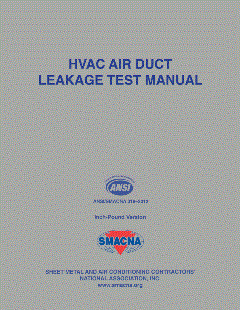Congress and the Trump administration have agreed on a new round of funding for U.S. Small Business Administration (SBA) backed loans. The Paycheck Protection Program and Health Care Enhancement Act includes $310 billion for the SBA and its Paycheck Protection Program (PPP).
Whether or not to add PPP funds was never in dispute among Democrats and Republicans on Capitol Hill over the last several days. However, Republicans had originally insisted on including only PPP funding in the measure, while Democrats had wanted the package to encompass aid to state and city governments and to hospitals.
In the end, the fresh $310 billion exceeded the $250 billion that had been mentioned unofficially last week. The final language also included money for hospitals and for coronavirus testing, but it did not address state and local governments.
DAMAGE ACCELERATING
Lenders and a reported 1.6 million recipients had exhausted the small business loan funding provided in the CARES Act, according to an SBA statement on April 16.
That left a situation worsening by the day, with COVID-19 prevention measures and related fallout straining HVAC companies as they look for ways to stay open and avoid furloughs or layoffs.
Todd Washam, ACCA’s vice president for public policy and industry relations, has spoken with contractors who are “sick over having to lay people off — first because of a mild winter, and now because of this. They’re not sleeping at night.”
HARDI describes its new weekly distributor survey as more of a snapshot than statistically significant data. That said, 20 percent of the respondents in the second survey (sent out April 17) reported having at least some contractor customers who were shutting down, unchanged from the first survey.
Six percent of the distributors themselves reported furloughing employees (on top of 17 percent who had done so the previous week), while 11 percent reported laying off employees in that time (compared to 13 percent who did so the previous week).
Seventy-one percent of the distributors HARDI surveyed indicated their weekly sales were down more than five percent, up from 54 percent the week before.
FROZEN FUNDING
In talking with Washam, several dozen contractors had painted a mixed picture of interactions and status within the SBA loan program thus far.
About half of those contacts had applied and also received their loans as of April 15. Sometimes that process has proved surprisingly swift.
“We got an application in on Saturday,” a contractor told Washam, “and by Tuesday, the money was there.”
However, it has not been that way for everyone. Roughly 25 percent, Washam said, had been approved but were waiting for funding to reach their accounts when the process had reached a halt. Alex Ayers of HARDI’s government affairs team had indicated that as a result of the funding gap, the SBA would not maintain an interim queue for applicants.
The other approximate 25 percent of Washam’s contacts reported having a difficult time with their particular lenders and had yet to receive approvals or funding.
Washam did say that based on his conversations, engaging non-PPP resources like coronavirus-related paid sick leave support and the SBA’s previously existing Economic Injury Disaster Loan program has seemed to go smoothly for contractors who have pursued them.
The new relief package happens to $60 billion for more EIDL loans and grants as well. Those funds may come with different terms than PPP loans.
With a variety of federal resources in play, HARDI has created an online decisionmaking tool to determine which programs may best match a given business and its owner’s expectations.
NEXT BUT NOT NECESSARILY THE LAST
Whether this funding will be sufficient in its effort to minimize unemployment remains to be seen. These SBA loans are generally forgivable in full, on the condition that recipients do not lay off workers or reduce wages.
The initial round of PPP funding ran out in less than two weeks despite some initial slowness in cranking up such a short-notice, intense-demand program. On the good side, the heaviest lifting in setting up the PPP pipeline has already been done, and restarting should prove less difficult.
Administration of PPP monies will likely receive more scrutiny this time around, to the extent that distributions can be accounted for. During the initial window, complaints arose about some lenders’ performance or decisions.
News also broke during recent negotiations that some large hotel and restaurant chains had received PPP approval, contrary to the spirit of the PPP (if not the letter, once it had been written, lobbied, voted, and signed).
Similarly, ACCA had voiced early concerns that the program’s intended effect could be diluted if companies who have venture capital backing and other sources of funding can also access PPP money.
The new legislation does not tighten any of the related PPP eligibility language set forth in the CARES Act. However, it does earmark $60 billion for a mix of smaller lenders, rural businesses, and those owned by women or minorities.
LOOKING AHEAD
Despite the current environment, Washam relayed that ACCA members had expressed some optimism about business prospects in the coming months.
This thinking suggests that with so many people working at home (and with more people in many homes in general), heat loads will increase significantly as the edge of summer approaches, and residents will also become more acutely aware of any current system shortcomings.
As a result, Washam said, some ACCA members are expecting a healthy repair/replace demand from consumers, possibly even more than what a typical summer would bring. For those contractors who can manage to endure the virus and its associated economic impact, some light may still await on the other side.










